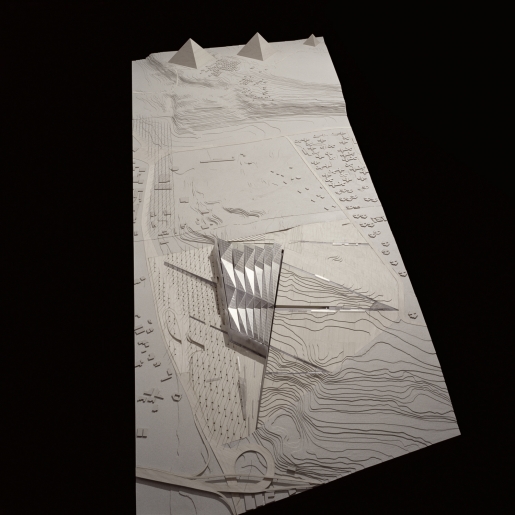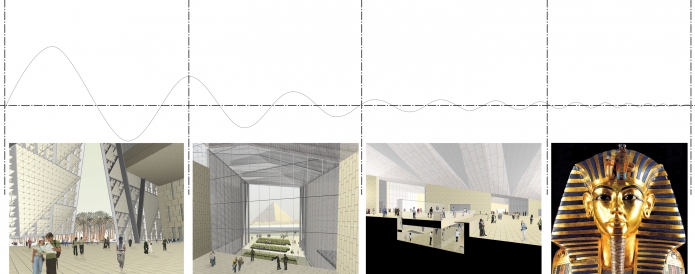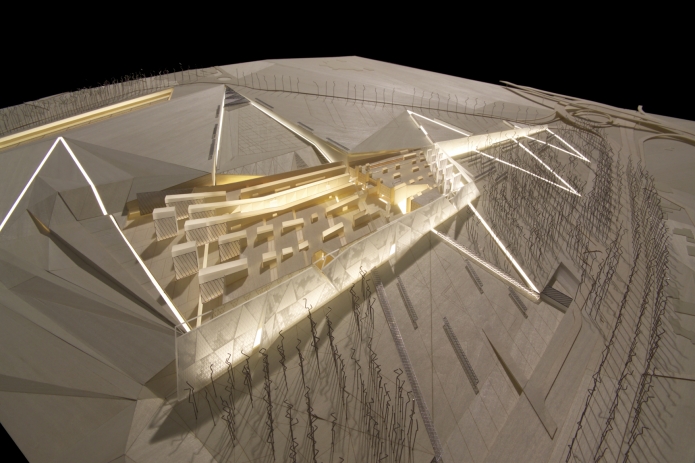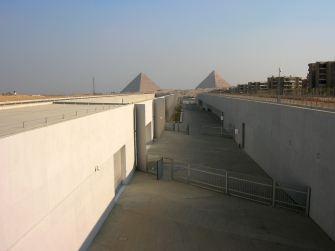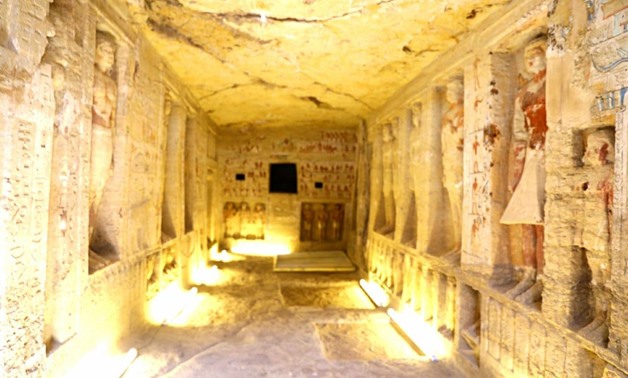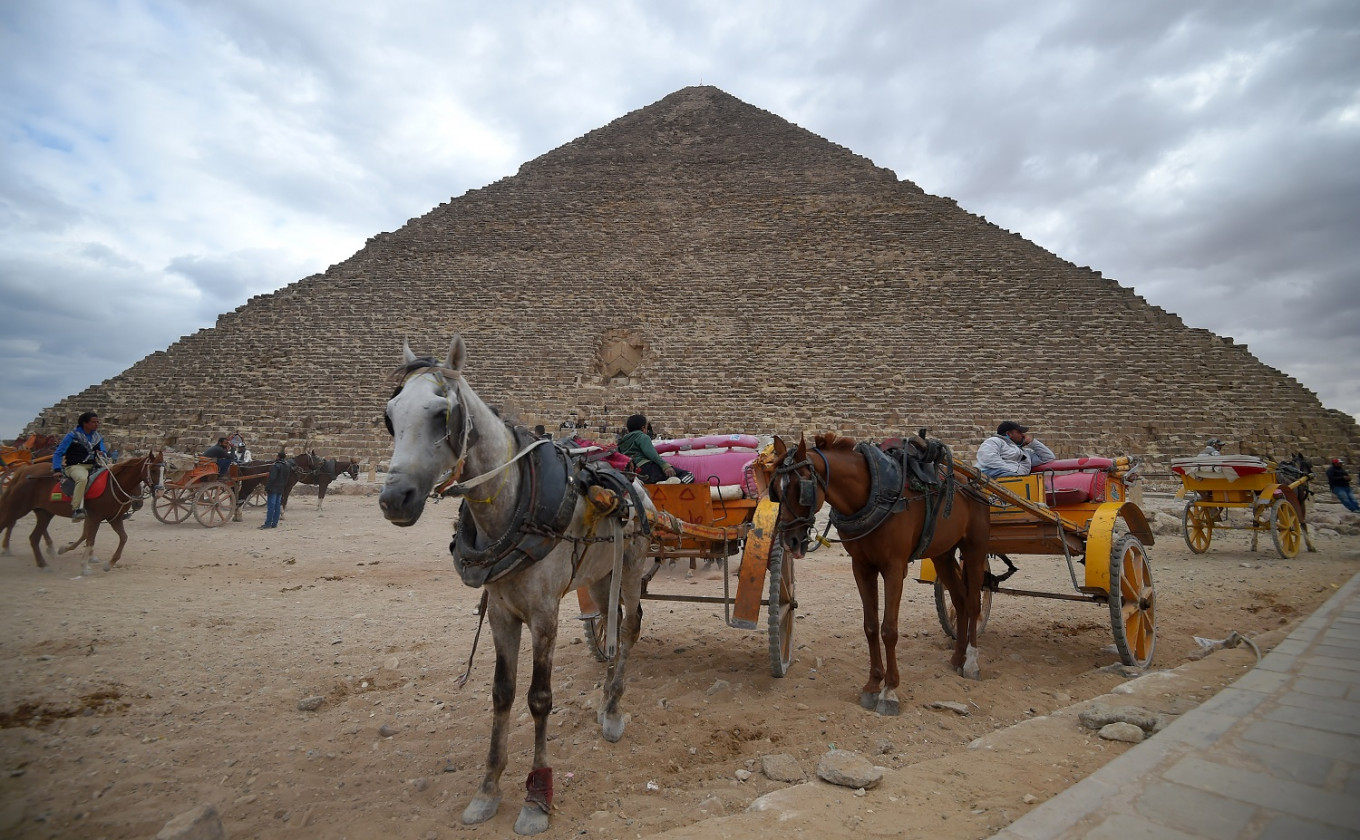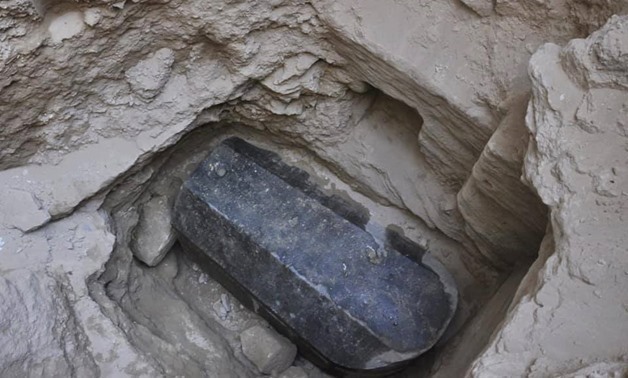Wishing you the best of New Years, or, at the very least, one that is better than 2018. I'd say "How could it get any worse?" but that would be foolish.
Glenn
https://www.washingtonpost.com/news/magazine/wp/2018/12/30/feature/dave-barrys-year-in-review-2018/?noredirect=on&utm_term=.ae1c974acd31
Dave Barry's Year in Review 2018
You thought 2016 and 2017 were bad? Let's look back at this past year.
Story by Dave Barry
Illustrated by Ryan McAmis
December 30, 2018
We can summarize 2018 in two words:
It boofed.
We're not 100 percent sure what "boofing" is, despite the fact that this very issue was discussed in a hearing of the
United States Senate Judiciary Committee. All we know for certain about boofing is that it is distasteful and stupid.
As was 2018.
In spades.
What made this year so awful? We could list many factors, including
natural disasters,
man-made atrocities, the utter depravity of our national
political discourse and the loss of
Aretha Franklin. Instead we'll cite one event that, while minor, epitomizes 2018: the debut of "
Dr. Pimple Popper." This is a cable TV reality show featuring high-definition slo-mo close-up videos of a California dermatologist performing seriously disgusting procedures on individuals with zits the size of mature cantaloupes. You might ask, "Who on Earth would voluntarily watch that?" The answer, in 2018, was: MILLIONS OF PEOPLE. That is the state of our culture. We can only imagine what new reality shows lie ahead. We would not rule out "Dr. Butt Wiper" or "People Blow Their Noses Directly Onto the Camera Lens."
Is there anything good we can say about 2018? Only this: It got us out of 2017. But even that didn't work out as we hoped.
As you recall, we, as a nation, spent all of
2017 obsessing over
2016: the election, the Russians, the emails, the Mueller probe, the Russians, the Russians, the Russians. … That was all we heard about, day after soul-crushing day, for the entire year.
So when 2018 finally dawned, we were desperately hoping for change. It was a new year, a chance for the nation to break out of the endless, pointless barrage of charges and countercharges, to move past the vicious, hate-filled hyperpartisan spew of name-calling and petty point-scoring, to end the 24/7 cycle of media hysteria, to look forward and begin to tackle the many critical issues facing the nation, the most important of which turned out to be …
… the 2016 election.
Yes. We could not escape it. We were like Bill Murray in "Groundhog Day," except that when our clock-radio went off, instead of Sonny and Cher singing "I Got You Babe," we awoke to still MORE talk of Russians and emails; MORE childish semiliterate presidential tweets about FAKE NEWS and Crooked Hillary; MORE freakouts by cable TV panelists predicting that — forget about the previous 300 times they made the same prediction — THIS time impeachment was IMMINENT, PEOPLE. IMMINENT!!
Meet the new year: same as the old year.
So at some point during 2018, normal, non-Beltway-dwelling Americans simply stopped paying attention to current events. Every now and then we'd tune in to a cable TV news show to see what kinds of issues our nation's elite political/media class was grappling with, and we'd see a headline like "PORN STAR
STORMY DANIELS: TRUMP DIDN'T USE A CONDOM."
That was when "Dr. Pimple Popper" started to look pretty good.
So we're very glad that 2018 is finally over. Once again we're on the cusp of a new year, another chance for change. And once again, we find ourselves feeling stirrings of hope — hope that the coming year really will be better. Why do we feel this way? Why, despite all our past disappointments, do we believe things really can improve? Because we are morons, apparently.
So let's not get too excited about 2019. Our emotional state, going forward, should be hopelessness leavened with despair, as we can see when we look back at the grotesque boof-a-palooza that was 2018, starting with …
JANUARY
… which sees world tensions rise when North Korean leader Kim Jong Un states that he has a nuclear missile
launch button on his desk. This leaves U.S. Commander in Chief Donald Trump with no viable military option but to fire up his Random Capitalizer App and
tweet "I too have a Nuclear Button, but it is a much bigger & more powerful one than his," thereby leaving no doubt as to which leader is more secure regarding the
size of his button. In an apparent effort to reassure everyone on his mental state, the president also issues a
tweet in which he describes himself as "genius….and a very stable
genius at that!" Which is EXACTLY HOW VERY STABLE GENIUSES TALK, OKAY??
The intellectual level of the national discourse soars even higher when it is reported that, during an Oval Office meeting on immigration reform, the president referred to some poorer nations as "
s—holes." This upsets many people, especially the frowny panelpersons of CNN, who find the word "s—hole" so deeply offensive that they repeat it roughly 15 times per hour for a solid week. Washington is consumed by a heated debate over what, exactly, the president said; the tone and substance of this debate are reflected in this actual sentence from a Washington Post story: "Three White House officials said [Sen. David] Perdue and [Sen. Tom] Cotton told the White House that they heard 's—house' rather than 's—hole,' allowing them to deny the president's comments on television over the weekend." (This is known in legal circles as the "s—house defense.")
Meanwhile the Wall Street Journal reports that shortly before the 2016 presidential election, Trump's personal lawyer, Michael Cohen, arranged a $130,000 payment to porn star Stormy Daniels so she would
keep quiet about an alleged act of executive outreach with Trump in 2006. Cohen
responds that "President Trump once again vehemently denies any such occurrence, as has Ms. Daniels." So that settles THAT.
A congressional squabble
shuts down the federal government for three days, but what with the intense media focus on the s—hole and porn star issues, hardly anybody notices.
In non-s—hole news, the residents of Hawaii experience an exciting Saturday morning when they receive the following message on their phones from the state's Emergency Management Agency: "
BALLISTIC MISSILE THREAT INBOUND TO HAWAII. SEEK IMMEDIATE SHELTER. THIS IS NOT A DRILL." Hawaii's governor, David Ige, is quickly informed that it's a
false alarm, but 17 extremely tense minutes go by before he gets the word out on social media. Asked later about the delay, he says — we are not making this quote up — "I have to confess that I don't know my Twitter account logons and the passwords." This statement arouses powerful feelings of longing among high-level Trump advisers.
The fiasco leads to the resignation of the head of the Hawaii Emergency Management Agency, who immediately accepts a position as director of pet transportation for
United Airlines.
In youth fads, the American Association of Poison Control Centers continues to receive reports of young people suffering ill effects from eating
Tide detergent pods. Asked to explain why young people would persist in eating something that tastes terrible and makes them sick, an
AAPCC spokesperson says, "As far as we can determine, it's because they're stupid."
Speaking of stupid, in …
FEBRUARY
… with yet another government shutdown
looming, Congress, whose irresponsible spending practices have put the nation on the road to fiscal disaster, faces a choice. It can either:
1. Continue to spend huge amounts of money that we don't have, or
2. Not.
After much late-night drama, Congress agrees on a compromise deal under which it will continue to spend huge amounts of money that we don't have. This display of leadership solves the budget problem permanently until March, when Congress will once again tackle the complex problem of government spending.
But the big story in Washington is the hotly debated release by congressional Republicans of the so-called "
Nunes memo," which, depending on which cable news network you listen to, either does or does not prove that the FBI, in its investigation of possible Russian influence on the 2016 election, abused the FISA process when it used the so-called "Steele dossier" — which was prepared by Fusion GPS, a research firm originally hired by the
Washington Free Beacon, a conservative news outlet, to investigate Trump, but dropped by that organization when Trump was nominated, then hired by an attorney for the Hillary Clinton campaign and the Democratic National Committee, after which Fusion hired former British intelligence officer
Christopher Steele as an investigator — to obtain a warrant to wiretap Carter Page, a foreign policy adviser in the Trump campaign who allegedly … Hey, wake up! This is important! Also there's a Democratic
counter-memo!
On the Stormy Daniels front, Michael Cohen acknowledges that he did, in fact, pay $130,000 to the porn actress, but he used
his own money and the Trump campaign had nothing to do with it and it was all totally legit. So that settles THAT.
In sports, the 2018 Winter Olympics get underway in PyeongChang, South Korea, with the historic
Opening Ceremonies highlighted by the release of 25 doves, which are immediately shot down and consumed by the North Korean men's biathlon team.
In domestic sports, the Eagles defeat the Patriots to win their first
Super Bowl, and huge crowds of joyous Philadelphia fans celebrate by destroying downtown Boston.
No, that would actually make sense. In fact the Philadelphia fans spend the night destroying their own city, then head home for a hearty breakfast of Tide Pods.
Speaking of classy behavior, in …
MARCH
… Secretary of State Rex Tillerson learns that President Trump has fired him when, during an official visit to Africa, he is ejected from his State Department plane at
35,000 feet.
No, seriously, Tillerson learns of his firing via a
presidential tweet, which says: "Mike Pompeo, Director of the CIA, will become our new Secretary of State. He will do a fantastic job! Thank you to Rex Tillerson for his service!"
So midair ejection would actually have been more dignified.
Speaking of air travel: United Airlines, which received some unfortunate publicity in 2017 when it "
reaccommodated" a 69-year-old man by dragging him, bleeding and screaming, off his flight, has an eventful week involving traveling dogs (these events actually happened):
• On Monday, a United attendant on a Houston-to-New York flight orders a passenger to stow a bag containing a French bulldog puppy, Kokito, in the overhead bin. This does not turn out well for
Kokito.
• On Tuesday, a German shepherd named Irgo, whom United was supposed to fly to Kansas City, instead gets flown to …
Japan! Meanwhile a Great Dane that United was supposed to fly to Japan winds up in Kansas City. It is probably a good thing that both of these breeds are too large for the overhead bin.
• On Thursday, a United flight from Newark to St. Louis is diverted when United realizes that a dog that was loaded onto the plane was supposed to go to
Akron.
Responding to public outrage over these incidents, United Airlines issues an apology, but sends it to the wrong email address.
Speaking of incompetence: Congress averts yet another government shutdown by passing, with President Trump
signing, a bill under which the government will — prepare to be shocked — spend a truly insane
amount of money that it does not have. With the spending problem addressed, Washington then turns to more pressing matters, specifically the Stormy Daniels crisis, which escalates when Daniels files a lawsuit to invalidate her nondisclosure agreement on the grounds that Trump
didn't sign it. This issue dominates the news cycle, especially on CNN, which puts Daniels's extremely outgoing lawyer, Michael Avenatti, on Full S—hole Rotation, which means he is featured on every CNN news program and also handles weather and sports updates.
Abroad, the Russian news agency Tass reports that Vladimir Putin, who campaigned on the theme "A Vote for Putin Is a Vote for Not Dying Under Mysterious Circumstances," has been
declared the winner of the 2018 Russian presidential election, as well as, in the interest of efficiency, the 2024 and 2030 elections.
In entertainment news, Warren Beatty and Faye Dunaway, seeking to atone for the 2017
envelope fiasco, return to the Academy Awards stage and triumphantly announce that the winner of the Oscar for best picture is "Gone With the Wind." Fortunately by then nobody is
watching.
The fiascos continue in …
APRIL
… when the abandoned
Chinese space station Tiangong-1, which has been anxiously
watched by scientists as its orbit decayed, plunges back to Earth and, in a worst-case outcome, fails to land on attorney Michael Avenatti, thus enabling him to continue appearing on CNN more often than the Geico gecko.
Meanwhile President Trump, faced with — among other problems — a continuing immigration crisis, increased Russian aggression in Syria and a looming trade war with China, launches a barrage of assault tweets at what is clearly the biggest threat to the nation:
Amazon.com. Trump is forced to back down when the retail giant threatens to suspend the White House's Amazon Prime membership and cancel delivery of a large order placed by the Defense Department, including six nuclear submarines, two aircraft carriers and a missile defense system with a five-star average rating from other nations. (Disclosure: Amazon CEO Jeffrey P. Bezos owns The Washington Post.)
In sports, Patrick Reed wins the Masters Tournament, prompting jubilant Eagles fans to celebrate by destroying what little is left of Philadelphia.
Responding to alleged Russian infiltration of Facebook and massive breaches of user data, the Senate Committee of Aging Senators Who Cannot Operate Their Own Cellphones Without the Assistance of Minions
holds a hearing intended to answer such probing questions as:
• What IS Facebook, anyway?
• Where does it go when you turn off the computer?
• Is there a print version?
• Is Facebook the one with the video of a cat riding a dog?
• How the heck do you get a cat to do that, anyway?
Patiently attempting to answer these questions is Facebook CEO Mark Zuckerberg, who wears a suit and tie and does a solid job of impersonating a regular human, except for not blinking and at one point having a tentacle emerge briefly from his left ear.
Abroad, the big news is a
historic summit between South Korean President Moon Jae-in and North Korea's Kim Jong Un. In what observers see as a major breakthrough, Kim agrees to sign a letter of agreement explicitly acknowledging, for the first time, that he has exactly the same hairstyle as Bert, of Bert and Ernie.
In sports, Patrick Reed wins the
Masters Tournament, prompting jubilant Eagles fans to celebrate by destroying what little is left of Philadelphia.
Speaking of celebrations, in …
MAY
… the biggest story by far is the
wedding of American ex-actress Meghan Markle to Prince Harry, Duke of Sussex, who is in the direct line of succession to the British throne behind Prince Louis of Cambridge, who is behind Princess Charlotte of Cambridge, who is behind Prince George of Cambridge, who is behind Prince William, Duke of Cambridge, who is behind Charles, Prince of Wales, who is 70, but any year now could get his shot at becoming the anachronistic ceremonial figurehead of one of the world's most second-rate powers. With the stakes so high, the media giddiness level soars to Defcon 1; the wedding cake alone gets more media coverage than Africa and global climate change combined.
In other international developments,
hopes for a summit meeting between Kim Jong Un and President Trump soar when North Korea releases three American prisoners, only to be dashed when North Korea refuses to accept, in exchange, Stormy Daniels. Later in the month hopes soar again when North Korea announces that, as a good-faith gesture, it has destroyed its Punggye-ri
nuclear test facility, only to be dashed again when satellite imagery of the explosion reveals that what the rogue nation actually blew up was a 2006 Hyundai Sonata with what a U.S. intelligence source describes as "really bald tires."
Meanwhile Trump announces that the United States will withdraw from the 2015 multination
nuclear deal with Iran on the grounds that (1) it is deeply flawed and (2) he does not own any golf courses there.
In entertainment news, Roseanne Barr sends out a tasteless, idiotic
tweet and immediately has her network show canceled, thereby illustrating a key difference between being a sitcom star and being president of the United States.
In sports, the wettest
Kentucky Derby in history is won by the favorite horse, Justify, after the rest of the field is eaten by sharks.
Speaking of eating, in …
JUNE
… President Trump flies to Quebec to attend the G-7 summit. Hopes that the meeting will produce a
historic agreement on global climate change, or at least a nice group photo, are dashed when, during dinner, Trump becomes embroiled in a heated policy disagreement with the leaders of Canada, France, Germany, Italy, Japan and the United Kingdom over the issue of ketchup.
From Canada the president flies to Singapore for the on-again, off-again, now on-again
historic summit with North Korea's Kim Jong Un. This meeting is more productive, ending with the two leaders signing a letter of agreement in which North Korea promises to think seriously about denuclearizing, in exchange for the formula for pumpkin spice latte.
On the domestic front, the president is forced to reverse his administration's policy on
separating immigrant children from their parents in response to a widespread and passionate international outpouring of criticism from his wife, Melania. Trump insists, however, that he remains "as committed as ever to protecting our borders by building a purely imaginary wall."
In other domestic news, Sen. Chuck "The Human Bandwagon" Schumer, citing studies showing that every living American adult except Mitt Romney has tried pot,
introduces a bill that would decriminalize marijuana at the federal level and "create a massive bureaucracy tasked with wasting millions of dollars on things like bong-safety regulations." The legislation would also create a trust fund under which a percentage of the federal tax revenue raised from marijuana sales would be set aside specifically to buy Cheez-Its.
Meanwhile, Supreme Court Justice Anthony Kennedy announces his
decision to retire, creating an important opportunity for the nation's political leaders to demonstrate that, although the public might have a low opinion of them as a group, it is nowhere near low enough.
In sports, the
World Cup soccer tournament opens in Moscow with a beaming Vladimir Putin looking on as the host Russian team coasts to a 5-0 victory over a Saudi Arabian team whose players appear distracted by the presence directly behind their bench of what the Russians insist is a "strictly ceremonial" tank.
Speaking of ceremony, in …
JULY
… President Trump continues to have exciting foreign-policy adventures, starting with a trip to Brussels for a NATO
summit, which gets off to a rocky start but settles down once the president's advisers are able to communicate to him, via frantic hand signals, that NATO is actually our side. From there the president travels to Britain, where he has tea with the
Queen and makes what he later tells the press is "a very generous offer, believe me, VERY generous" for the Crown Jewels.
Then it's on to Finland for a
summit meeting with Vladimir Putin. At a news conference afterward, the president tells reporters that Putin — and if we can't trust Vladimir Putin, whom can we trust? — "strongly" denies interfering in the 2016 U.S. election. Trump adds that he, personally, sees no reason why Russia would interfere. This comes as a surprise to the U.S. intelligence community and pretty much everybody else with the IQ of cottage cheese or higher. After a firestorm of criticism, Trump clarifies his remarks, explaining that he actually meant to say that he sees no reason why
Russia WOULDN'T interfere. Thus the pesky issue of the 2016 election is finally laid to rest.
In domestic news, the president nominates
Brett Kavanaugh to the Supreme Court. Accepting the nomination, Kavanaugh says: "If confirmed by the Senate, I pledge to give full and fair consideration to every case brought before me. Also every keg." For their part, Senate Democrats release a statement promising to "consider Judge Kavanaugh's qualifications in good faith and with open minds," adding, "obviously we are lying."
In state news, Colorado state legislators, fired up by the Chuck Schumer decriminalization bill, unanimously vote to legalize marijuana, only to be informed that marijuana has been legal in Colorado since 2012. After enjoying a hearty laugh, the legislators unanimously vote to order 300 large pizzas.
Meanwhile
Seattle becomes the first major U.S. city to ban plastic straws and utensils in all restaurants. San Francisco, sensing a threat to its status as front-runner in the Progressivelympics, responds by banning food and beverages in all restaurants.
In financial news, Facebook stock drops more than $100 billion in a single day — the greatest single-day loss in stock-market history — after the company releases a quarterly report revealing that many people have trouble distinguishing between the "wow" emoji and the "sad" emoji. Despite this setback
Facebook is still worth way more than General Motors and most other American companies that make actual things.
In sports, France defeats Croatia to win the
World Cup. Jubilant Eagles fans, with nothing left in Philadelphia to destroy, lay waste to Delaware.
Speaking of defeats, in …
AUGUST
… a Virginia jury finds former Trump campaign chairman
Paul Manafort guilty of tax evasion, bank fraud and having a name that can be rearranged to spell "Fart Upon Lama." Only minutes later, Trump's former lawyer,
Michael Cohen, pleads guilty in New York to various charges, including arranging hush-money payments in 2016 to Stormy Daniels and Playboy model Karen McDougal "at the direction of a candidate for federal office" who is not named but was obviously Bernie Sanders.
No, seriously, the candidate was obviously Trump. Some of the hush money was reportedly paid by the company that owns the National Enquirer at the direction of its CEO, whose name — we swear we are not making this up — is David Pecker (which can be rearranged to spell "David Pecker").
The Manafort-Cohen story gets massive coverage on CNN and MSNBC, with hordes of joyful panelists celebrating the now-inevitable impeachment of Trump by dancing around the studio singing "Ding Dong, the Witch Is Dead." For its part, Fox News presents a timely investigative series on preventing salamander-transmitted diseases.
A Virginia jury finds former Trump campaign chairman Paul Manafort guilty of tax evasion, bank fraud and having a name that can be rearranged to spell "Fart Upon Lama."
In a coordinated nationwide response to Trump's repeated attacks on the press, sternly worded editorials rebuking the president are published in
more than 300 newspapers, with a combined editorial-page readership estimated at nearly 14 people. For his part, CNN's Jim Acosta courageously
confronts White House press secretary Sarah Sanders over this issue, despite the very real risk that he will have to feature himself prominently in his report on this harrowing incident.
In business news,
Apple becomes the first publicly traded U.S. company to be worth $1 trillion, thanks to its shrewd business model of constantly coming out with costly new products that require costly chargers that are completely different from all the costly Apple chargers you already have, and sometimes spontaneously mutate overnight in such a way as to require even newer and costlier Apple chargers.
Speaking of electricity, in …
SEPTEMBER
… Washington is atingle with a level of excitement that can only result from a clash of two high-voltage personalities: Chuck Grassley and Dianne Feinstein, the chairman and ranking member of the Senate Judiciary Committee, both having served in the Senate since shortly before the Big Bang. The committee holds two hearings on the Supreme Court nomination of Brett Kavanaugh, the
second devoted to explosive allegations contained in a letter that was delivered back in July to Feinstein, who, what with one thing and another,
failed to mention it until September. The nation watches, riveted, as committee members hear more than seven hours of emotional testimony by Kavanaugh and his accuser, Christine Blasey Ford, at the end of which the nation has learned the following facts:
1. The senators have no idea what, if anything, actually happened.
2. Nor do they care.
3. The truth is utterly irrelevant to them.
4. They all decided long ago how they were going to vote, based entirely on political calculations.
5. Given exactly the same testimony but different political circumstances, every single senator would passionately espouse the position diametrically opposite the one he or she is passionately espousing now.
6. Brett Kavanaugh really likes beer.
In other political news, the New York Times publishes an
anonymous op-ed allegedly written by a "senior administration official" who is harshly critical of President Trump. Despite intense pressure, the Times refuses to reveal the author's identity, although linguistics experts see a possible clue in the fact that the column twice refers to Trump as "my husband."
Meanwhile the president
addresses the United Nations General Assembly, declaring that his administration "has accomplished more than almost any administration in the history of our country." The audience reacts with laughter, which the president's advisers assure him is how world leaders traditionally show respect. Fox News confirms this.
In sports,
Tiger Woods wins the PGA Tour Championship, his first tour win since 2013. The Maryland National Guard is called out to defend Baltimore from the advancing army of jubilant Eagles fans.
Speaking of wins, in …
OCTOBER
… the Senate approves the Kavanaugh nomination by a vote of 50 to 48, with Alaska Sen. Lisa Murkowski voting "present" and Chuck Schumer voting "extra cheese."
The New York Times, in a major investigative story, asserts that Donald Trump amassed much of his fortune through "
dubious tax schemes," including a $723 million deduction in 1993 for what was described in Trump's federal tax return as "croissants." Trump
denounces the Times story as FAKE NEWS, asserting that the deduction "was actually for a range of pastries." Fox News confirms this.
In other executive action, the president hosts
Kanye West in the Oval Office, where the rapper/producer/entrepreneur engages in a freewheeling, wide-ranging exchange of views with himself, then inadvertently launches a nuclear strike against Portugal before returning to his home dimension. The president also finds time in his schedule to initiate a Twitter beef with Stormy Daniels by referring to her in a tweet as "
Horseface." Daniels responds with a tweet mocking the "Tiny" size of the president's legacy. This exchange dominates several news cycles but, incredibly, does not prove to be the low point of the month.
Tension mounts when explosive devices are mailed to high-profile Trump critics, including Barack Obama and the Clintons. After an intensive nationwide manhunt, federal authorities
arrest a man who has been living and driving around in a van plastered with images clearly broadcasting the message, "I AM A DANGEROUSLY CRAZY PERSON," but since he was doing this in South Florida nobody noticed.
An already bad month gets exponentially worse when a gunman shouting anti-Semitic epithets opens fire in a
Pittsburgh synagogue. It is an atrocity so horrific, and so shocking, that nearly three minutes pass before people start using it as a club to bludgeon those with whom they disagree politically.
In sports, the nation rejoices as, for the ninth consecutive year, some team other than the New York Yankees wins the
World Series. Atlanta is evacuated when troops are unable to halt the relentless advance of jubilant Eagles fans.
Speaking of looming menaces, in …
NOVEMBER
… the nation braces for what political analysts agree will be the most important
midterm elections since the dawn of time. Voters prepare for the big day by binge-watching Netflix, because regular TV has turned into a gushing sewer of political attack ads apparently created by and for dimwitted 4-year-olds.
President Trump hits the
campaign trail to warn voters that if Democrats are elected there will be nobody to protect the nation from a deadly caravan of alleged Hondurans moving relentlessly toward the U.S. border at approximately the speed of a senior golf foursome. This
caravan, according to the president, contains gang members, diseases, diseased gang members, Middle Easterners, spies and diseased Middle Eastern spy gang members carrying what Trump claims — and Fox News confirms — is "a 200-foot-long atomic switchblade." U.S. troops head for the border, having been ordered there by the president, but only after he was informed by military advisers that the Rio Grande is too shallow for aircraft carriers.
For their part, the Democrats appeal to voters with a three-pronged message:
Prong One: The Democrats are the party of fairness, diversity and inclusion.
Prong Two: Anybody who disagrees with the Democrats about anything is Hitler.
Prong Three: But more racist.
The election goes smoothly, except of course in Florida, which should seriously consider outsourcing all of its government functions to a competent organization, such as Montana. As usual the most confused county in Florida is
Broward — often called "the Hawaii Emergency Management Agency of counties" — which to this day is not 100 percent certain how it voted in Dewey vs. Truman.
Nationwide, however, it is clear the
voters have given the Democrats control of the House while leaving the Republicans in control of the Senate, thereby guaranteeing that for the next two years Congress will accomplish nothing, which may well be what the voters intended.
The election goes smoothly, except of course in Florida, which should seriously consider outsourcing all of its government functions to a competent organization, such as Montana.
The day after the election Jeff Sessions
resigns as attorney general upon learning that his office has been relocated, in what the White House describes as a "security measure," to the men's restroom of a Kwik Mart in Frederick, Md.
Meanwhile the ongoing saga that is "The
Jim Acosta Story, Starring Jim Acosta as Jim Acosta" takes a thrilling turn when Jim gets into a dramatic struggle with a White House intern over a microphone. The Trump administration, always looking for ways to make a stupid situation even stupider, suspends Jim's press pass and releases a
video that somebody apparently doctored to make it appear more violent by splicing in the shower scene from "Psycho."
Speaking of violence: The president, addressing the question of whether Saudi Crown Prince Mohammed bin Salman had knowledge of the murder of Saudi journalist Jamal Khashoggi in a Saudi consulate by agents of the Saudi government, releases a
statement, which he apparently typed with his own thumbs, stating, "maybe he did and maybe he didn't!" So that settles THAT.
Abroad, intelligence satellite photographs reveal that 16 construction projects in
North Korea — which the North Korean government claims are going to be Chipotle restaurants — in fact are missile bases. North Korea insists that these will be used "only for delivery orders."
In business news,
Amazon, after a much-publicized nationwide search, announces that it will locate new headquarters in Arlington, Va., and New York City, in return for tax breaks, infrastructure improvements, four seats in the U.S. House of Representatives and replacement of the Statue of Liberty with a 340-foot-tall statue of Jeffrey Bezos naked.
As Thanksgiving approaches, two turkeys — named
Peas and Carrots — are summoned to the White House, where the president, in keeping with a lighthearted Washington tradition, appoints them to high-level posts in the Justice Department. Two days later he fires Peas over what insiders describe as "policy differences." Within minutes Peas is hired as a political analyst by MSNBC.
Meanwhile the American people observe the
Thanksgiving holiday by reflecting on their many blessings, then assaulting each other over consumer electronic devices that are imperceptibly better than the ones they already have. While this is happening the federal government releases a report warning that climate change will have a
catastrophic impact on the nation's future, but because of all the sweet Black Friday deals nobody notices.
The month concludes on a positive note as NASA's $850 million InSight space-probe lander, after a six-month interplanetary journey covering 301 million miles, touches down on the surface of
Mars. It was supposed to go to Venus, but NASA used navigational data provided by United Airlines.
Speaking of mistakes, in …
DECEMBER
… President Trump heads to Argentina for the Group of 20
summit, which consists of the G-7 nations plus Russia, China, India, Argentina, Australia, Saudi Arabia, Mexico, South Korea, South Africa, Indonesia, Microsoft, the Corleone family, Gryffindor and LeBron James. Trump meets with Chinese President
Xi Jinping in an effort to end the escalating trade war, which is caused by China deliberately making cheap products that Americans want to buy. The two leaders reach an agreement under which Trump will hold off on imposing $200 billion in new tariffs on Chinese goods, in return for which China will purchase a new Chevy Volt, nearly doubling that vehicle's annual worldwide sales. In response, the Dow Jones industrial average soars, only to plunge again when financial analysts learn that China declined the premium-floor-mat option.
On the ever-changing personnel front, Trump announces that his
nominee to replace Jeff Sessions as attorney general is "an excellent lawyer, I forget his name at the moment, but he's terrific, believe me." Fox News confirms this. To replace Nikki Haley as U.N. ambassador the president chooses
Heather Nauert, but only after his advisers are able to convince him that Katniss Everdeen is a fictional character. Replacing
John Kelly as White House chief of staff is Wayne Newton.
Meanwhile in a devastating blow to the U.S. humor industry, Michael Avenatti
announces that he will not run for president. His departure narrows the potential Democratic field to pretty much
every Democratic politician ever, including Elizabeth Warren, Kamala Harris, Cory Booker, Bernie Sanders, Joe Biden, somebody called "
Beto" and the late Hubert Humphrey, all of whom believe Trump will be vulnerable in 2020, as confidently predicted by the many expert political observers who also confidently predicted Hillary Clinton's presidency.
The Hawaii Emergency Management Agency attempts to broadcast a text warning, but because of what an agency spokesperson says is "human error," the message actually sent to all of the state's residents reads HAPPY NEW YEAR.
Fueling this confidence are reliable rumors swirling around Washington that special counsel
Robert Mueller is about to do some major thing that, while not specified in the rumors, will definitely mean the downfall of Trump and THIS TIME IT IS REALLY HAPPENING, PEOPLE. In anticipation of this event, CNN unveils a special panelist desk that is the length of a regulation basketball court, providing the capability to have an unprecedented 170 panelists sitting side-by-side expressing outrage simultaneously, and bringing CNN one step closer to the day when it has more panelists than actual viewers.
All this happens as congressional Democrats prepare to
take control of the House of Representatives, where they plan to implement an ambitious agenda focused on the No. 1 concern of the American people, which of course is …
The 2016 elections!
Meanwhile tension continues to build along the U.S.-Mexico border as American
troops, originally deployed to protect the United States from the Honduran Death Caravan of Doom, are ordered to turn around and attempt to stop the vast horde of jubilant Eagles fans surging southward from what is left of San Diego.
In a disturbing display of U.S. vulnerability to cyberattacks, Russian hackers briefly gain control of NOEL666, the supercomputer that churns out the hundreds of virtually identical Hallmark Channel
Christmas movies, and cause it to broadcast a movie titled "You Better Watch Out," in which the male and female lead actors, instead of falling in love and getting married, become psychotic from eating tainted fruitcake and savagely murder their entire village with sharpened candy canes.
In a more positive story, NASA's interplanetary InSight lander proves to be a technological success and an inspiration to all Americans, distracting us from our petty political squabbles and uniting us in admiration of the stunning pictures it transmits back to Earth from the
Martian surface, including a remarkably clear image of what a NASA spokesperson says "appears to be a large mound of uncounted ballots from Broward County, Florida."
The month ends on a troubling note when one of North Korea's newly constructed Chipotle restaurants launches a ballistic missile carrying what military analysts say is a three-ton tactical beef burrito, which travels 4,600 miles before splashing into the Pacific Ocean just off the coast of Oahu, producing a tidal wave containing potentially dangerous levels of tomatillo chile salsa. The Hawaii Emergency Management Agency attempts to broadcast a text warning, but because of what an agency spokesperson says is "human error," the message actually sent to all of the state's residents reads HAPPY NEW YEAR.
Here's hoping that the wish expressed by this erroneous HEMA message comes true. We would truly love for 2019 to be a happy year. Or at least a better year than 2018 was. It has to be better, right? How could it possibly be worse?
Please, put down the Tide Pod.
Dave Barry is a Pulitzer Prize-winning humor columnist and author.
-- Sent from my Linux system.
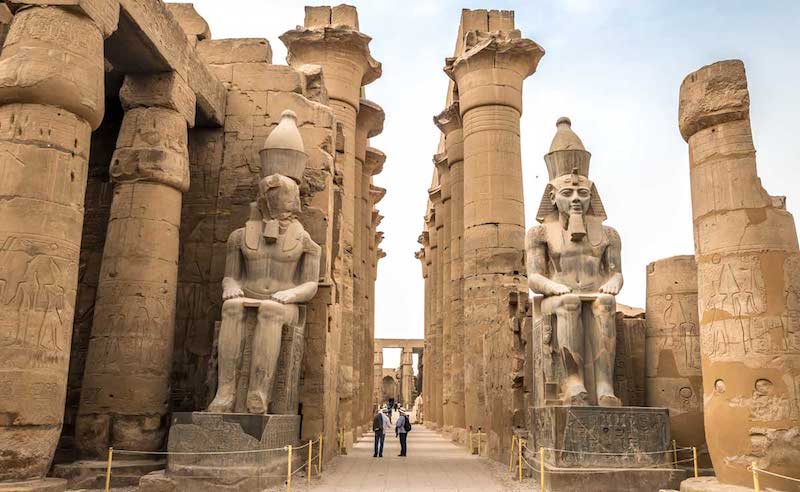


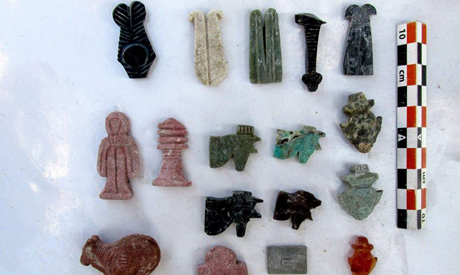
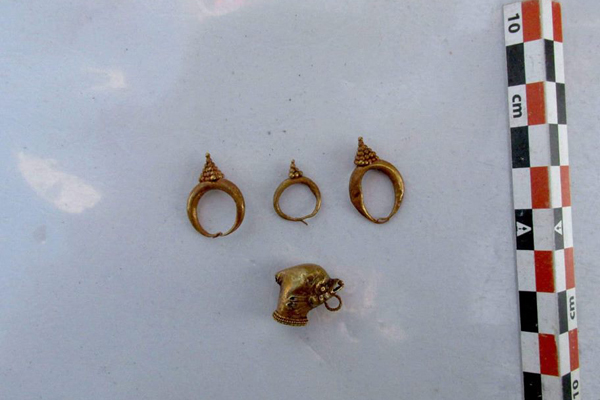
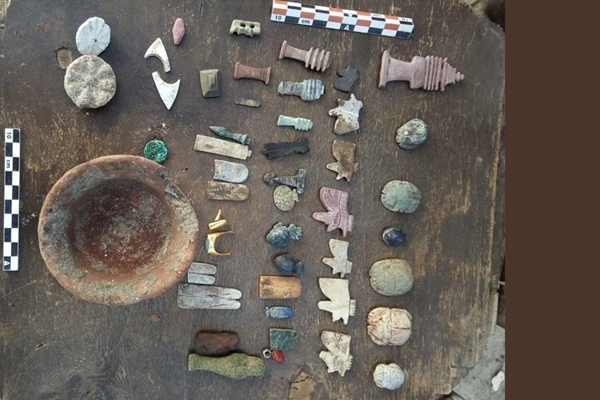
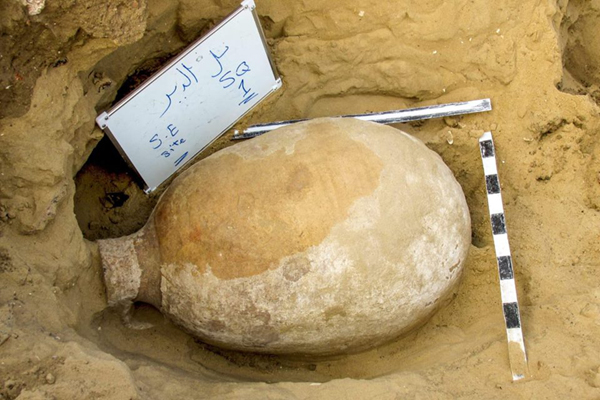
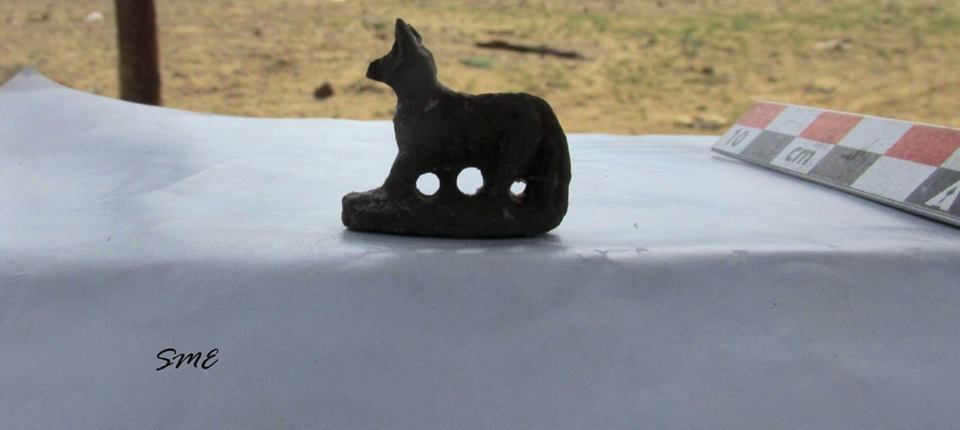

 Giza, Egypt
Giza, Egypt 
